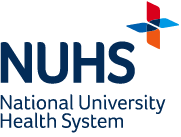 Subscribe and ensure you don't miss the next issue!
Subscribe and ensure you don't miss the next issue!
From triage rooms to emergency departments, much of what keeps a hospital running smoothly lies in the quiet, repetitive work that rarely makes headlines. At the National University Hospital (NUH), digital tools are being designed and implemented to make this work more efficient and less burdensome.
Learn about a few practical innovations in various stages of use and development at NUH that embody this advancement towards smarter, better-informed care.
Reducing routine load for healthcare staff
One tool already in regular use is Medivoice, a voice-to-documentation programme that helps healthcare staff, including doctors, nurses and administrators, record their daily clinical activities and conversations with patients and caregivers. These are tasks that are essential, but often time-consuming. Medivoice is part of RUSSELL-GPT, the National University Health System’s (NUHS) secure clinical large-language model platform that supports a wide range of healthcare documentation tasks. Among nurses using Medivoice, a study showed a 40 per cent increase in efficiency when generating clinical summaries, compared to those who relied on manual documentation. For advanced users, this translates into about 10 minutes saved per serious illness conversation or community meeting documentation — valuable time that can be redirected towards patient care.
In NUH’s Emergency Medicine Department, another AI-based tool is in its early rollout. The ED Summariser helps doctors generate medical reports directly from their clinical notes. By streamlining this documentation process, it frees up doctors to dedicate more time to patient care, particularly critical in a high-pressure environment like the emergency department.
Over at the pharmacy, Medbot is being prototyped to assist patients with understanding their prescriptions. Sometimes, patients may leave the counter unsure about how or when to take their medications. Powered by AI, Medbot provides accessible explanations, helping to reduce confusion, improve adherence and ease the workload on pharmacists. In the long run, it could shorten queues by streamlining routine consultations.
Empowering patients with timely information
For patients and caregivers, small uncertainties, such as how long they might wait at the emergency department, can add up to a stressful experience. Since March 2025, users of the NUHS App can now check the estimated wait times at NUH Children’s Emergency, NUH’s Emergency Department, Ng Teng Fong General Hospital’s Emergency Department and Alexandra Hospital’s Urgent Care Centre. This helps patients better prepare for their journey and make more informed decisions before arrival. While clinical urgency continues to guide triage and care delivery, the transparency provided by these wait-time updates also supports hospital operations by helping to manage expectations and improve patient flow — especially during peak periods.
The app also offers several features to guide patients to the most appropriate level of care. Users can complete health declarations in advance, enabling them to proceed to registration upon arrival and improving triage efficiency. The app also connects patients to a nurse-staffed helpline (NurseFirst) for real-time advice on their symptoms and care needs — helping them assess whether an emergency department visit is necessary. It includes location-based information on nearby clinics, such as GPFirst and PaedsENGAGE, offering patients accessible alternatives for non-emergency conditions.
While the Ministry of Health plans to consolidate healthcare apps into a unified national platform by 2027, NUHS continues to maintain and enhance the NUHS App to ensure a seamless user experience in the interim. These updates are part of a broader push to improve care navigation and reduce avoidable visits to the emergency department, while ensuring that operational quality is not compromised during the transition.
Like this article? Simply subscribe to make sure you don't miss the next issue of EnvisioningHealth!




















